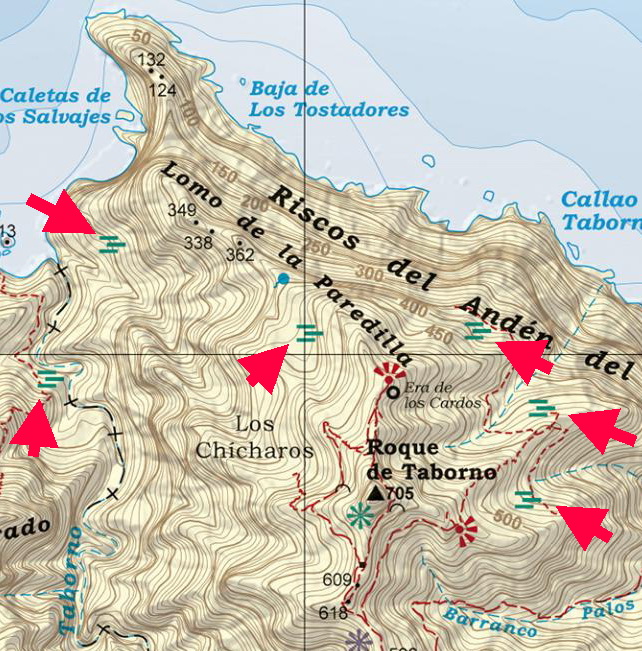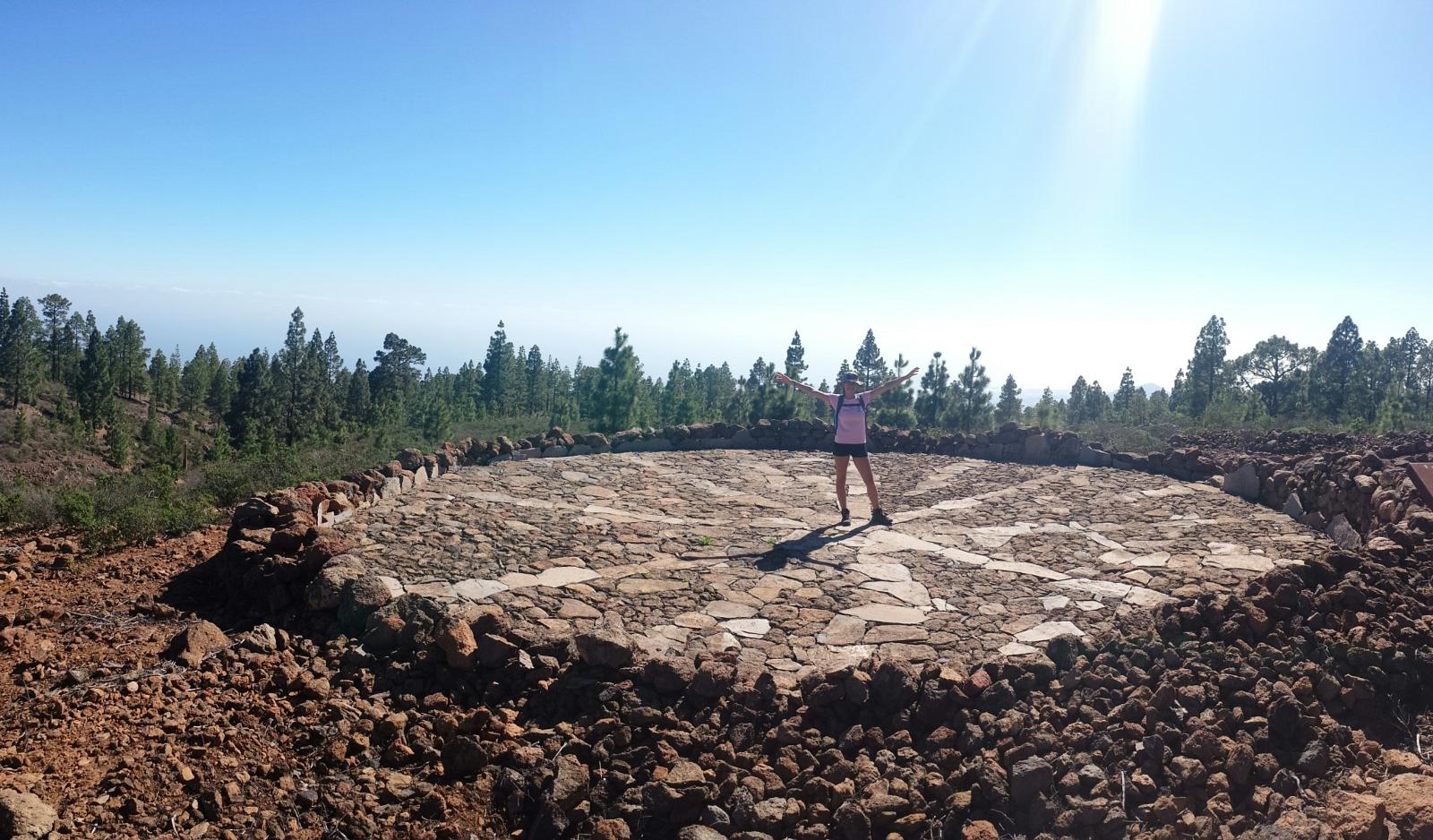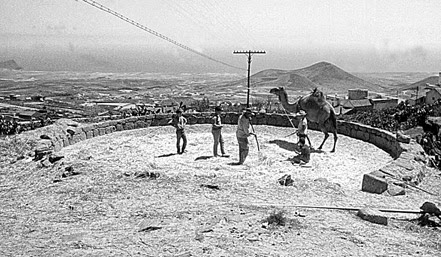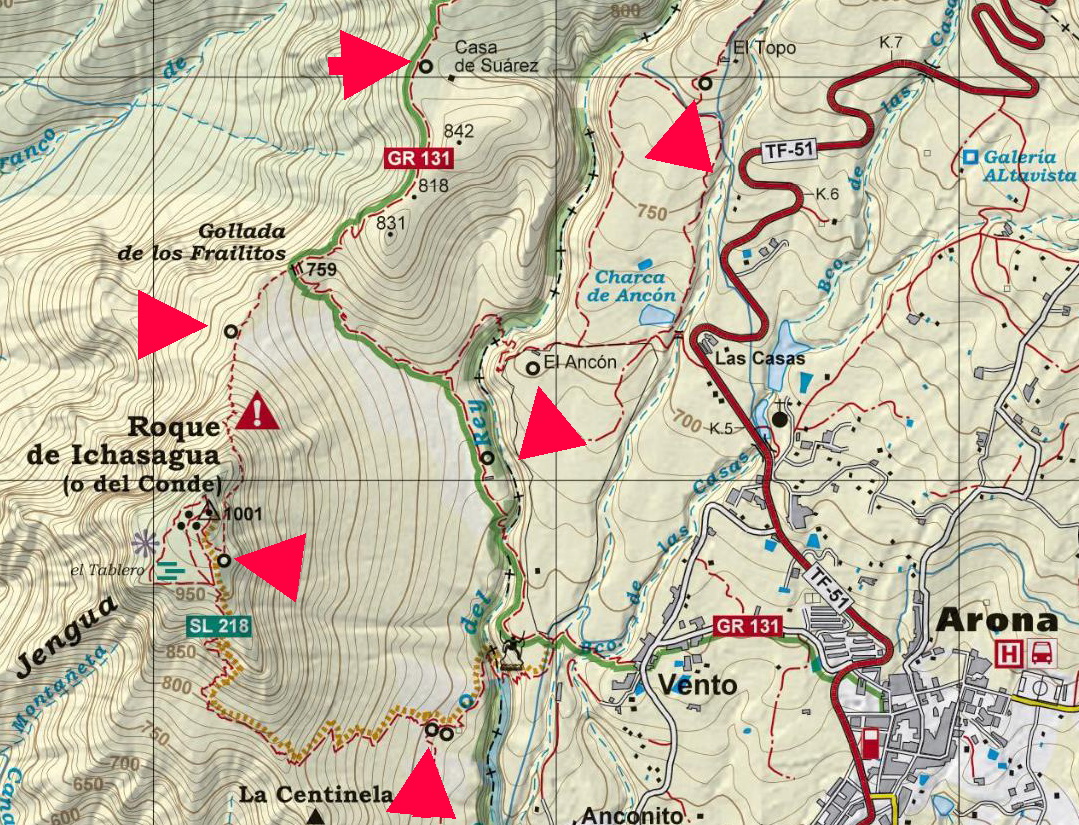WORTH KNOWING |
WALKING WITH THE LANZA |
On the hiking map, we have located most of the heritage highlights that can be seen along the hiking paths. They tell us about the difficult life that the inhabitants endured until recent times
AGRICULTURAL TERRACES
These terraces can be seen all around the island. At the end of the 19th century, many landless farmers had to leave the island, while others decided to stay and work on the steep and stony slopes. They built terraces far away from their villages and farmed cereals and potatoes. It is worth walking along the narrow paths to see these abandoned terraces.
Abandoned farm and water cistern
AGRICULTURAL TERRACES IN ISOLATED PLACES
THRESHING FLOORS
The culture of grains was the most important in the Canary Islands and Gofio (canarian flour made from roasted grains) the food staple. These round places were often built in high places or saddles to take advantage of soft and steady winds to facilitate the work of winnowing, separating the grain from the chaff, once the threshing was completed.
PATHS
Many paths were already built by the aboriginal people of the Canary Islands and widened by the castilian conquerors after the 15 th. century. There are different kinds of paths: Camino Real, the main path linking the villages, Traviesa (traverse paths), Camino de tira (used for the transportation of wood in oxtracks, Vereda (narrow path), Caminos de herradura (Chart tracks used by horses and donkeys), Camino de trillo (inside a private property), Atajo (shortcut), Camino vecinal (inside a municipality), Camino de prois o puertos (linking the village with its ports or docks and Pasada (just for shepherds in steep slopes)
WATER CONDUITS, FILTRATION GALLERIES
The springs in the mountains, the wells in the flatlands and the collection of rainwater in some houses (many couldn't even afford this) ensured that enough water was available for the locals. However, some areas ran out of water in summer.
The old water conduits were carved by hand across steep slopes and sheer cliffs, and were very narrow. In the 20th. century, larger water conduits were built, wide enough to walk along them.
The filtration galleries are tunnels drilled and blasted through rocky mountains to tap into the water table. They allowed the expansion of banana cultivation in dry, sunny areas further south. On Tenerife, there are more than 1000 filtration galleries (average length: 1100 metres). Some difficult hikes follow narrow paths that were built across steep slopes to reach the galleries.





